
Written in 2025
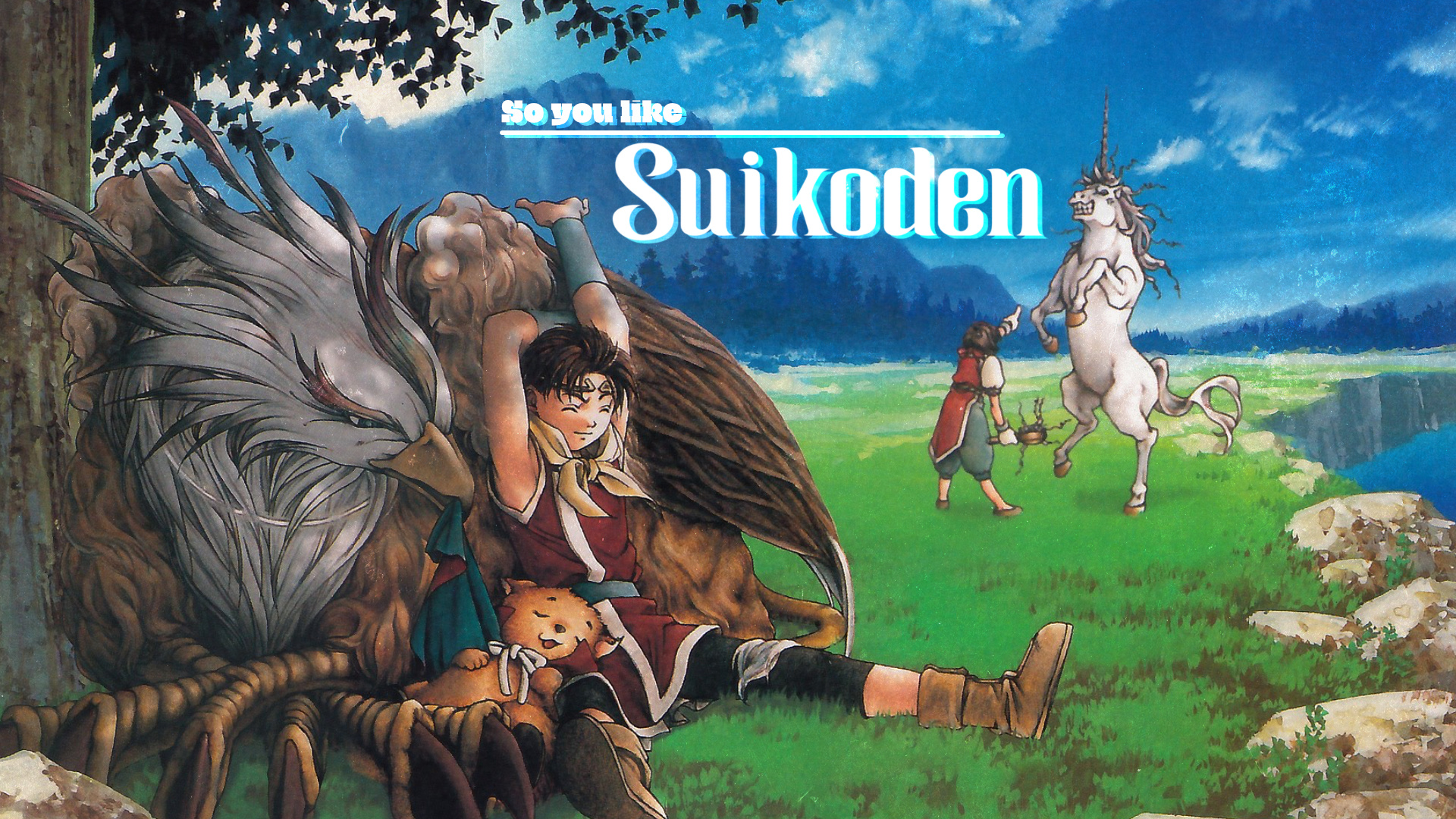 Oh my, Suikoden. What a legendary series. One of the pinnacles of japanese RPGs. Full of love, a coherent story in the first three parts and now plagued by the greed of a former video games company that morphed into a capitalistic monstrosity. And still, people love Suikoden. I try to explain why in this article.
Oh my, Suikoden. What a legendary series. One of the pinnacles of japanese RPGs. Full of love, a coherent story in the first three parts and now plagued by the greed of a former video games company that morphed into a capitalistic monstrosity. And still, people love Suikoden. I try to explain why in this article.
This time, the structure will be a bit different than in other Retrospective articles. It will be a tad more personal. I still hope you like it, and that you learn something from it. Even if it might just be some background information of your personal host here, hehe.
September 1996. After spending a good year devoting myself to my PC, I wanted to play something again.
I hadn't played that much on the PC. PC games weren't for me; I hadn't found any that truly captivated me like the console games I had loved playing in the early 90s.
Still, I loved my PC. I learned to program with QuickBasic, painted with PaintShop Pro, explored a lot of music (who remembers those supermarket CDs with hundreds of MOD and S3M files on them?), and started writing stories. I wasn't very good at it, but I had a lot of fun with it all.
But now I wanted to play something again. I picked up a German Club Nintendo magazine and looked at what was available for the Super Nintendo. From the Video Games magazine, I knew a new console was coming soon, but I wanted to play something now. And a PlayStation was too expensive for me. Besides… who would play on a Sony device all the time? After all, the Video Games "Szene Chat" wrote that Sony was making a loss on every device sold.
No, I preferred to stick with the Super Nintendo.
A small screenshot caught my eye in the issue: a blue hero with long hair (or a heroine - I didn't know yet) in the tips section.
I liked that. And I had already played role-playing games in 1993 and 1994.
On a whim, I went to the local Quelle agency (the good Mr. Kulik always had a few games on hand) and picked up "Breath of Fire 2." And how thrilled I was with this game.
The epic story, the many twists and turns, the great graphics in the fights and rousing music.
If I had previously only been interested in role-playing games, from now on I was a total role-playing fan.
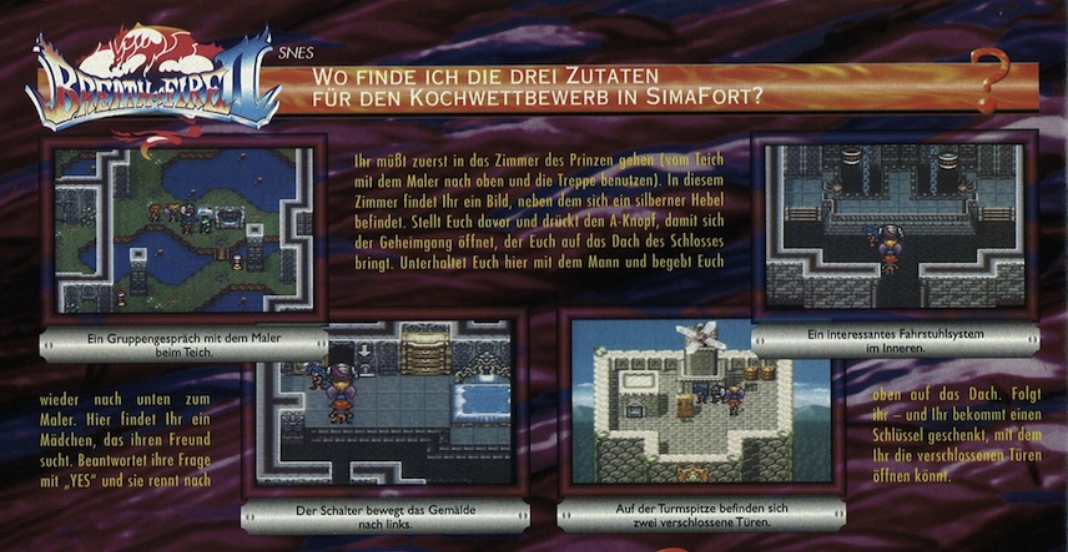 Photo, The Trigger: Club Nintendo 4/1996
Photo, The Trigger: Club Nintendo 4/1996
At the end of 1996, I started at a new school. There, I became friends with another young man (Hello, Row!). He was a big console gamer and owned a PlayStation. What a sacrilege!
We always took our gaming magazines to school and compared them during recess. There, I noticed another game that looked very similar to the recently finished Breath of Fire II. And it had already been announced for February 1997. But not for the Super Nintendo. Or even the N64 (which I had pre-ordered at that time). But for the PlayStation!
He had shown me a MAN!AC issue in which the game was rated relatively moderately at 74%.
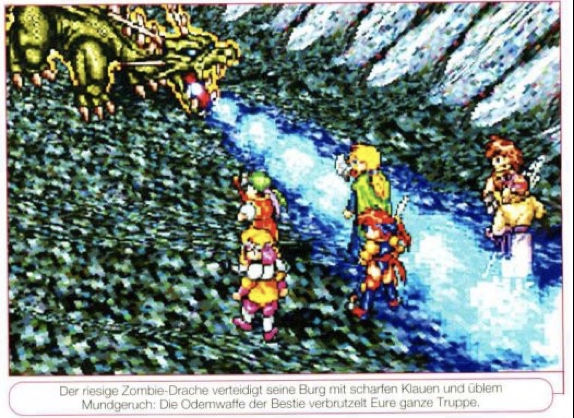 Photo MAN!AC 2/97, test report
Photo MAN!AC 2/97, test report
Today I know that Robert Bannert, the reviewer, only likes to write pointedly and doesn't like Japanese games (unless they're a real Toriyama). But back then, I thought, "Oh, the MAN!AC is really strict!" – no big deal.
I liked the game. I canceled my N64 pre-order and bought a PlayStation. And yes, that actually happened.
But then the game was postponed. Again and again. February 13th finally became March 13th. It was the very weekend I had to write a project for school. Sigh.
My mother let me play the game once on Thursday the 13th, and again on Sunday when my project was finished.
For the next few weeks, I was just in love with this game.
Oh yeah, I got the equivalent of an A for my work, for which I gave up on Suikoden this first weekend. At least.
The story is based on the old Chinese legend “Water Margin” (or in German translation “The Robbers of Lian-Shang-Moor”), but has nothing in common except the idea that a hero gathers 107 other heroes together to fight against a corrupt empire.
Suikoden is a loving story about a general's son who, in his father's absence, recognizes the empire's crimes and joins the rebel army. Each of the 107 heroes and heroines to be recruited has their own story, which can be shorter, longer, or even part of the main story.
Most of these heroes can be put into the combat squad – up to six in total, but unfortunately you can never play openly with party compositions, as slots are always somehow occupied by the (intense, but short) main story.
Nevertheless, Suikoden is a lovely 2D role-playing game with a lot of heart, wonderful artwork, and a captivating soundtrack. Incidentally, it's from the same team as Castlevania: Symphony of the Night.
A few years passed, and I grew up. School continued, and my passion for role-playing games continued (except for Lufia 2, which I played right after Suikoden. I don't like that one). At some point, I bought another copy of "Video Games" following a recommendation from a Dutch friend on the English "RPG Lair" forum. And there was a review of "Suikoden 2" in it. Man, I was happy. The game didn't succumb to the PlayStation's 3D trend, but remained 2D, lovingly crafted, had 108 characters again, and even continued the story of Suikoden just five years later.
I then bought it from this new store called “Amazon” and was bitterly disappointed.
The German translation was terrible. There were huge PAL bars. Why couldn't it be English, like its predecessor?
But generally, I knew I liked that game.
I had to resort to the most shameful of means. I burned the US version of Suikoden 2 onto CD and then played it.
To show how seriously disappointed I was, I placed the burned disc on top of my original game in the PlayStation PAL case.
And I loved it. The story was even more intense than its predecessor; the very beginning made me cry. Some of the music is so well composed that it goes straight to the heart. The story is about village children who get caught up in a conflict between two countries and are drawn by fate to both sides of the war.
The portraits aren't quite as good as in Suikoden, and the soundtrack, while beautifully composed, is now played solely through a sound synth. On the other hand, the graphics are much better, more detailed, and better animated.
One of the best role-playing games, even today.
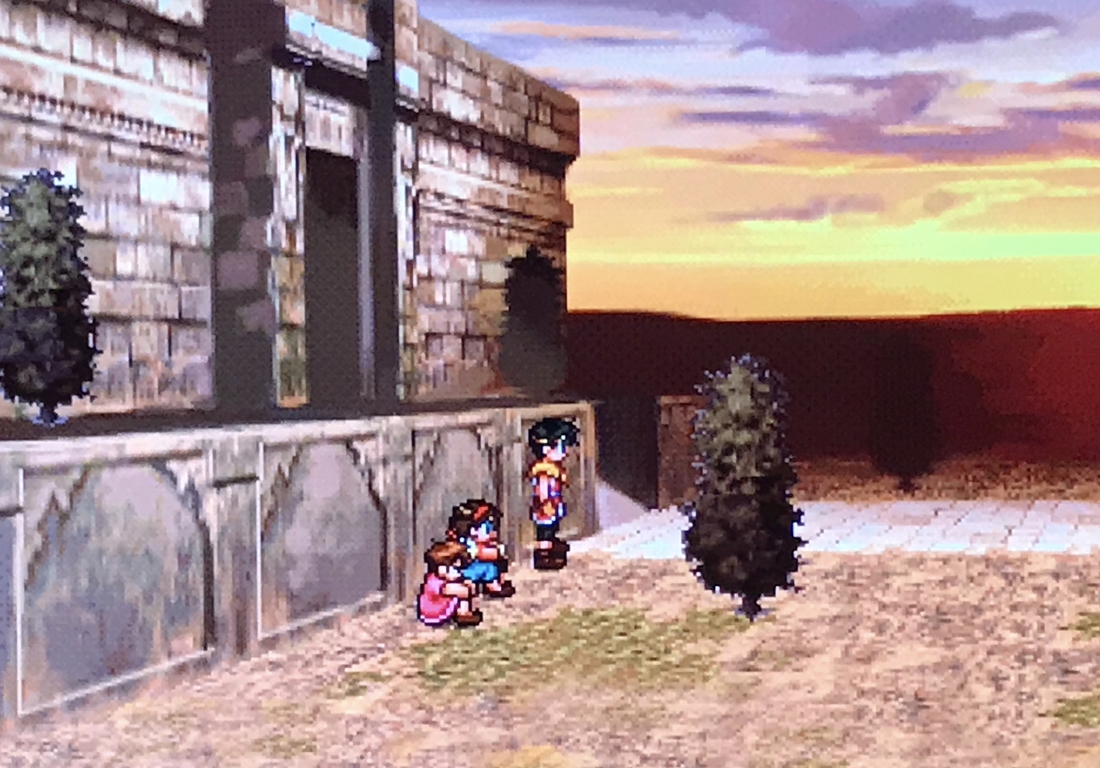 Screenshot: Suikoden 2. Check out our screenshots gallery!
Screenshot: Suikoden 2. Check out our screenshots gallery!
Oh yeah – I legally purchased the US version of Suikoden 2 years later. You could buy the game on the PlayStation 3 console as part of the PlayStation Classics series! And it's still on my PlayStation 3 hard drive to this day, and I play it every now and then.
There were two additional games for Suikoden 2 – "Suikoden 2 Gaiden" and "Suikoden 2 Gaiden 2," two visual novels that expand the story even further. I never played them, though.
Time passed, and a new PlayStation generation emerged. Suikoden 3 was released on the new PlayStation 3—only in Japan and the US.
No problem for me. I had already completed my apprenticeship, was doing community service, and had some money.
So I had a friend from the US bring me a PlayStation 2 and the game, and I bought a 220V voltage converter from Wolfsoft. It hummed and was expensive (like everything from Wolfsoft), but it did the job.
Just the game? That was a shock. Well, not in terms of the story, the music, or the artwork. You could still feel the Suikoden 2 influence here. But the graphics. Oh my goodness.
 Photo: Suikoden 3 screenshot, source: mobygames.com
Photo: Suikoden 3 screenshot, source: mobygames.com
The lovely 2D landscapes have become low-poly 3D landscapes. The frame rate was somewhere between 20 and 60 FPS, uncapped.
At that time, I had a girlfriend and no patience for bad-looking games. So I sold the US PS2 on eBay, along with Suikoden 3, and left the game alone for the time being.
Some time passed, and at some point I saw a preview for Suikoden IV on a MAN!AC DVD. That was around 2004.
And I was impressed. The 3D graphics were really clean by then. I'd also made my peace with 3D graphics in the meantime and had just finished Star Ocean III. A complex, at times blatantly unfair, but so thrilling piece of work.
Suikoden IV was no longer from the original team: the original director, Yoshitaka Murayama, had been fired during the development of Suikoden III and was not allowed to finish that game.
Suikoden IV took place 150 years before the first game, but in the same world— an island kingdom. In true Wind Waker style, players had to travel back and forth between islands and could discover—or not discover—a great deal.
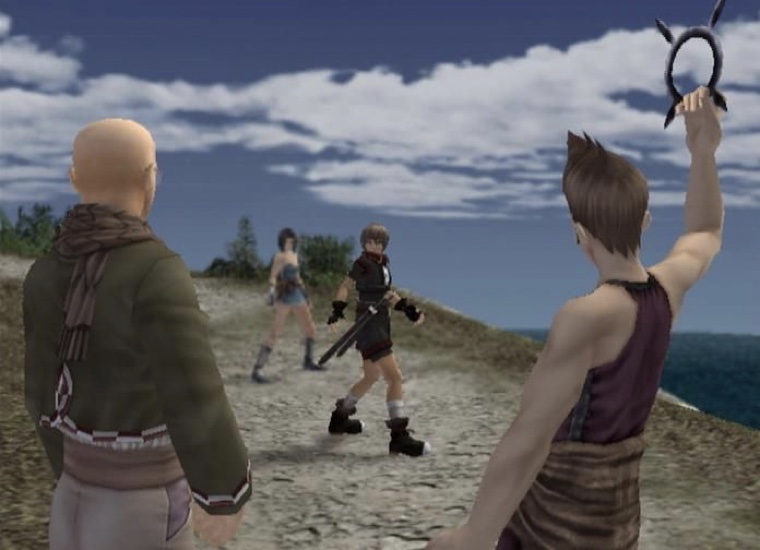 Suikoden IV screenshot, source: Mobygames.com
Suikoden IV screenshot, source: Mobygames.com
The battles were still turn-based, the story epic (but somehow "small"... you were only saving a small island kingdom, not the world), the ship battles were fun, and it was okay. Not outstanding, but I enjoyed it.
And the artwork was again by Junko Kawano, the artist who also drew the artwork for Suikoden 1. Perhaps that was the reason for me to give the game a chance :)
There was even a bonus game for Suikoden IV, “Suikoden Tactics,” which rounded out the story a bit.
Wait, we already talked about that above?
Yes, but it wasn't until 2006 that I gave the game another chance. I got it again on my now modified PAL-PS2. And this time, it clicked.
The 3D graphics are simple, but pretty. The colors are beautifully chosen. And Suikoden 3 tells the story with its 108 characters a bit differently. You always have chapters from the perspective of a different character (Chris, Geddoe, or Hugo), and experience the different sides of a conflict.
Everything is brought together by the story of a Thomas who is supposed to manage a castle, which then becomes the headquarters of an army that is supposed to defend the disputed lands of the grasslands against an overpowering nation.
Towards the end, players can even freely choose the main hero (or heroine).
Suikoden 3 is a diamond in the rough. Sometimes brutal, sometimes ugly, sometimes half-baked in its gameplay ideas, but ultimately, there's more content, more interesting characters, and more lands to explore than in almost any other game.
Despite all its drawbacks, and even though I didn't like it that much at first, it is one of the best role-playing games, alongside Suikoden 2.
 Suikoden 3 screenshot, source: Mobygames.com
Suikoden 3 screenshot, source: Mobygames.com
I liked Suikoden IV, but it wasn't a commercial success. It lacked a bit of the heart of the older games.
Konami wasn't giving up and tasked the new team with developing another Suikoden. Like Suikoden IV, the story was set in the past, but only 15 years before the first Suikoden.
They wanted to do everything right – 6 fighters per party (in Suikoden IV there were only four), a large world, an epic story of betrayal and family, great, motion-capture animated cutscenes…
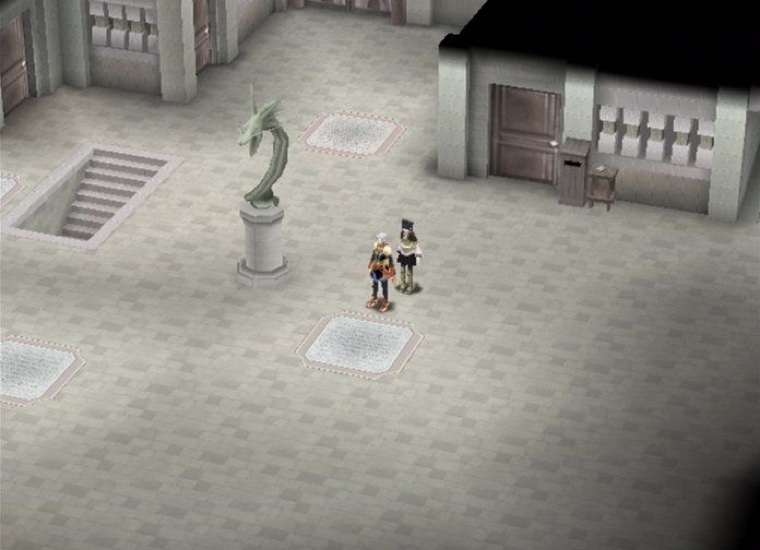 Screenshot Suikoden V, source: mobygames.com
Screenshot Suikoden V, source: mobygames.com
...and this is what came out. No, really. This is what the game looked like. Three zoom levels, super-empty, monotonously colored areas.
The story was nice and had some great emotional moments, but in many ways it was a copy of Suikoden II.
The game was "fine," nothing more. Impeccable in itself, but for 2005… PlayStation 2 games looked different.
Compare here. THIS is what PlayStation 2 games could look like back then. And then take another look at the screenshot above...
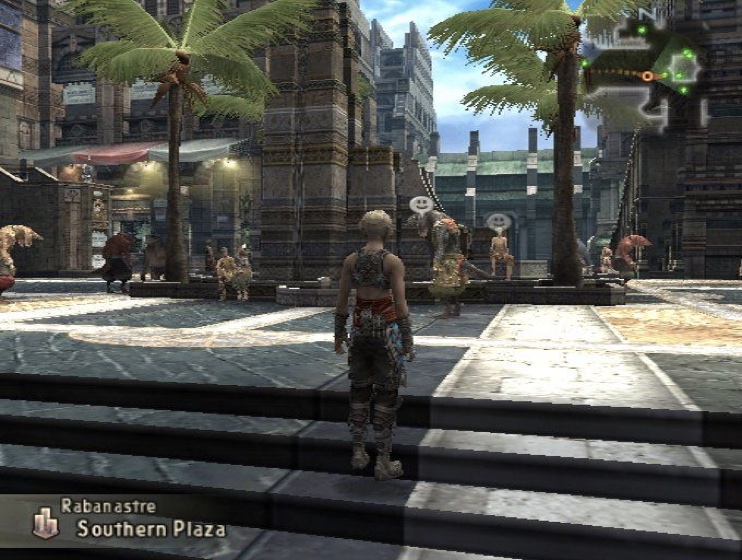 Screenshot Final Fantasy XII, source: mobygames.com
Screenshot Final Fantasy XII, source: mobygames.com
Although, in all fairness: Suikoden V had incredibly good cutscenes, as promised. They also ran in the in-game engine. Which makes it all the more surprising why the actual game looked so dry and uninspired.
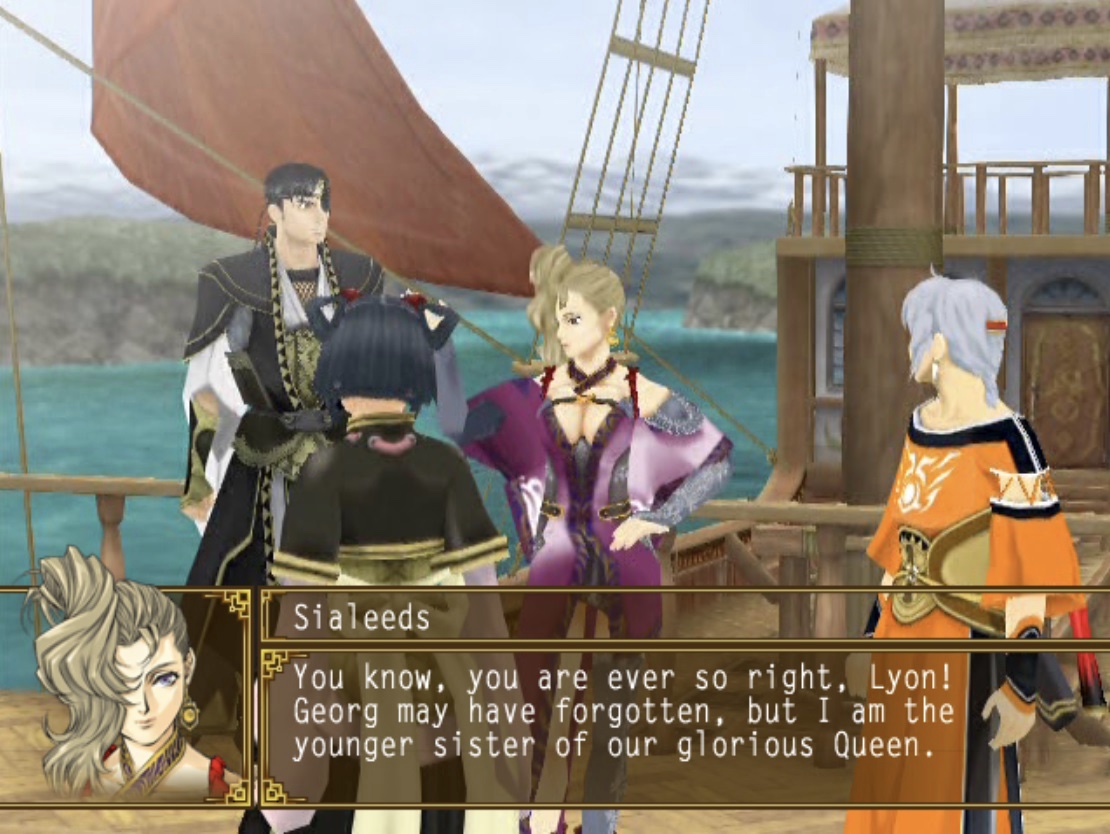 Screenshot Suikoden V, source: mobygames.com
Screenshot Suikoden V, source: mobygames.com
That's what it could look like.
Suikoden V was still important to me— it was the game I played when I was quite sick in 2005 and was slowly working my way back to health through rehab. The story kept me motivated during a dark time. You have to give the game credit for that.
Funnily enough, that's exactly why I can't play it anymore. When I see or hear Suikoden V, I think of a time in bed, in pain, and in doctor's offices.
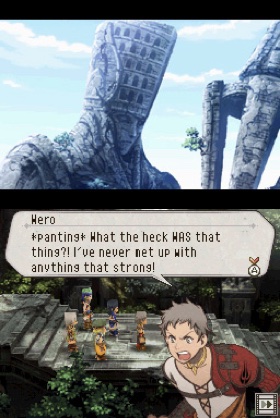
Disappointed by the commercial failure of Suikoden V, Konami had a "we're reinventing the world" moment and no longer tied new Suikoden games to the Suikoden world. Every Suikoden game would take place in a new world from then on.
(Many publishers seem to do that in economically troubled times. And not just game companys too. Weird.)
And so Suikoden Tierkreis was released on the DS. A very sweet, turn-based role-playing game with an interesting parallel world story and quite good graphics. I never finished it because the battles can often be very long and slow. My friends love it, though. It did motivate me quite well on a few business trips in 2008.
The last Suikoden to date was released in 2012. It was released on the PlayStation Portable, and like Tierkreis, it was a standalone game set in its own world, but also featured 108 collectible characters.
I've never played this game, but it was highly recommended to me by many people!
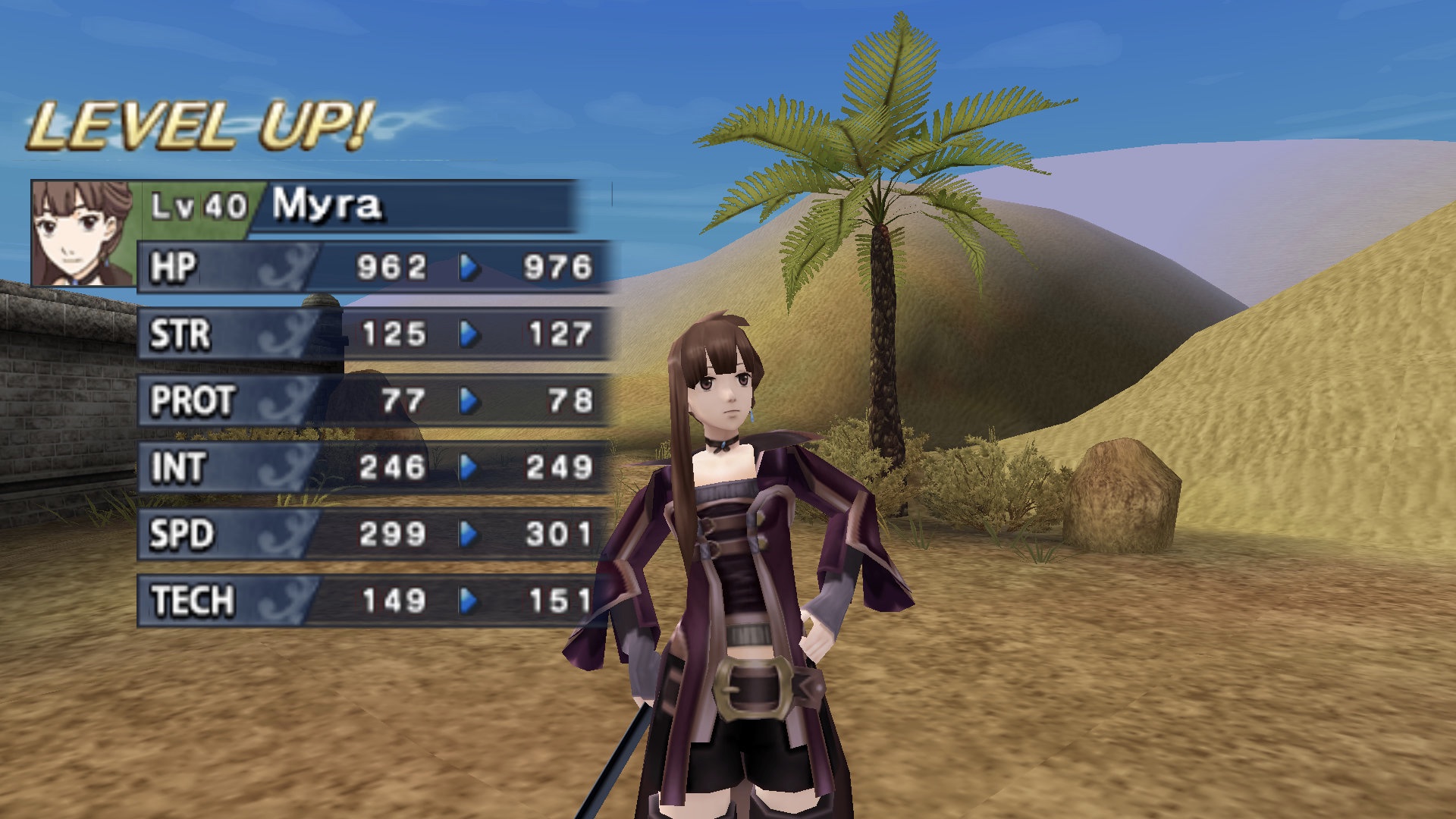 Suikoden: The Woven Web of a Century, source: rpgfan.com
Suikoden: The Woven Web of a Century, source: rpgfan.com
Suikoden has been quiet for a long time, but now a new Suikoden has been announced for 2025. The game was announced in the wake of the successful Eiyuden Chronicle launch and the happy fanbase following the release of the Suikoden I & II HD remasters.
And what was included in the announcement.
Return to the old world! Returning characters! 108 collectible characters! 2D graphics (in the fashionable HD 2D style). It sounds too good to be true!
…oh, and it’s a free to play game with gacha mechanics on Android, iOS and Windows.
Konami swears it's supposed to be a great story and that gacha is just an add-on feature. We'll see.
 Suikoden Star Leap. Source: konami.com
Suikoden Star Leap. Source: konami.com
Why do people enjoy playing Suikoden? And why does a simple 2D HD remaster rock an entire community and sell millions of copies?
 Suikoden 3 artwork. Source: Konami
Suikoden 3 artwork. Source: Konami
Suikoden 1–3 are truly magical. It's a believable world of various realms, plagued by magical runes, the most powerful of which take on a life of their own and intervene in people's destinies.
The three games in particular build an epic story that unfolds over the course of 20 years. Characters grow with it, have children, and die tragically, and players participate in this world.
Every person has a story. A heart. Every human, elf, dwarf, and goblin has their part in the overall story conceived by Yoshitaka Murayama.
The series culminates in an epic finale that isn't quite complete, yet one that fans have been waiting for for years.
It will never happen. Yoshitaka Murayama was fired by Konami. And sadly, he has since passed away.
And yet Konami keeps releasing games that either have nothing to do with the epic (Zodiac) or are set BEFORE the events (Suikoden IV, V). They don’t dare take on the legacy themselves.
Nevertheless, these three seemingly inconspicuous games on the PlayStation 1 and 2 managed to sustain a community. For over 20 years, there have been sites and still-active online communities where the history of games and characters is discussed.
Visit gensopedia.org, suikosource.com, the subreddit r/suikoden, or suikoversum.de. I also have a little bit if you're interested: Suikoden coverage
Hardly any other series as old as this, from such a shabby publisher, is as loved as Suikoden. Rightly so.
Discover the series. Get the HD remaster of Suikoden I and II. You won't regret it.
 This article also appeared in German at Videospielgeschichten.
This article also appeared in German at Videospielgeschichten.
I'm sometimes writing articles in my native language for this great magazine. As you imageine, most everything revolves around role playing games there too, as it is the heart and soul of my gaming interest. You can see all my articles here.